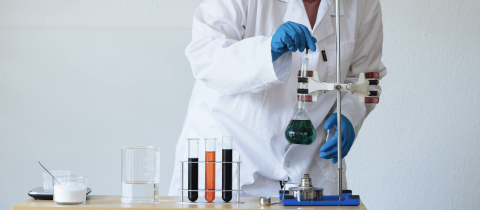The gold standard in science is the randomized, controlled, double-blind trial. If you want to know whether Garcinia cambogia causes weight loss, or whether glucosamine helps with arthritic pain, there is only one way to find out. You have an experimental group that is given the substance and a control group that is given a placebo, with every other variable being held constant. These are difficult, expensive studies to carry out because you need a large enough group of subjects for statistical weight, you have to ensure compliance and you have to monitor what is going on. Almost always some questions remain unanswered. Could results have been different with a different dose? Perhaps a longer experimental time is needed. Were all variables properly controlled for?
While randomized controlled trials are important, they are not always necessary. Science has accumulated a great deal of knowledge over the years making it possible to make evaluations based on scientific plausibility. Let’s take an extreme example. You see a picture on the web that purportedly shows a man floating over the country side being held aloft by a couple of dozen helium balloons. We do not need to design a trial to determine if this is possible. It is not. Why? Because of the law of buoyancy. A balloon filled with helium rises because the helium in it weighs less than the amount of air it displaces. Using this difference in weight, one can calculate the weight a balloon can lift. A liter of air weighs roughly 1 gram more than a liter of helium, so that’s what the balloon can lift. A 50 kilo man would need at least 3500 balloons to experience any lift at all. There is no need to carry out any experiment to know that the picture on the web is a fake.
Similarly no randomized trials are needed to determine that oxygenated water, despite its advertisers’ claims, cannot increase energy or improve physical stamina. The amount of oxygen dissolved in the water can be calculated and it is insignificant in comparison to what the body uses. Furthermore, we breathe through our lungs, not through our stomach, so that whatever oxygen is dissolved in the water is not going to make it into the blood to combine with hemoglobin. In addition, blood is normally saturated with oxygen anyway.
Neither do we have to carry out studies to determine if the newly approved artificial sweetener advantame should be required to carry a warning about a risk for people afflicted with phenylketonurea (PKU), a genetic inability to metabolize the amino acid phenylalanine. Advantame has a chemical similarity to aspartame, and like its cousin, can release phenylalanine. Why does it not need a warning? Because it is one hundred times sweeter than aspartame, so only one, one hundredth as much is needed to sweeten a beverage. This cannot release enough phenylalanine to cause a problem.
There is no need to mount experiments to determine whether tuning forks can restore the human body’s natural vibration of 60-65 Hz and thereby alleviate all sorts of health issues, as is claimed by the promoters of “Sound Therapy.” There is no such thing as the body having a natural vibrational frequency, and talk of tuning forks being able to restore al frequency that has gone out of tune due to illness is plain nonsense. Claims that tuning forks can address specific diseases like cancer or multiple sclerosis are just out of tune with what we know about how the body works. The idea that cancer can be cured with a tuning fork is totally implausible and does not require an experiment to prove that it is not sound.







